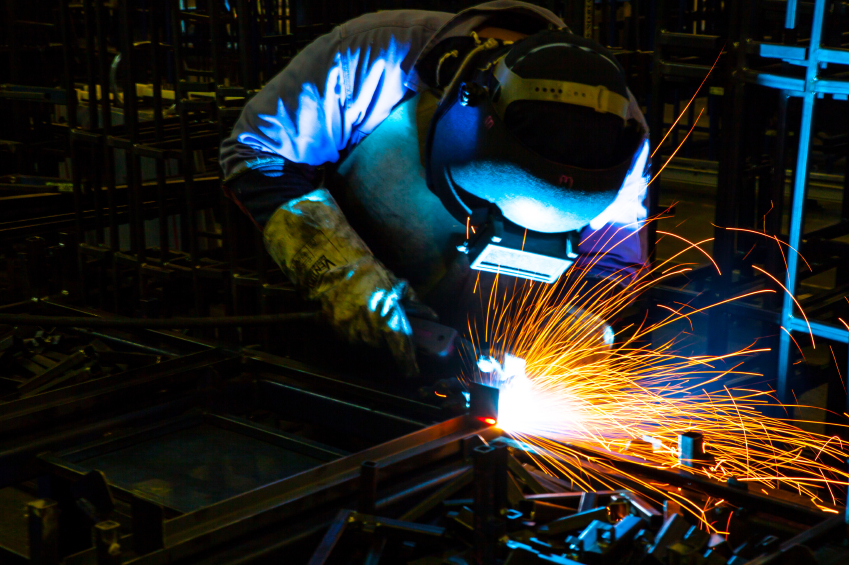Welding exposes everyone around you to the hazards of the job. It’s important to follow these basic welding safety tips to keep yourself and the workers around you safe while performing this dangerous job:
1. Read the Book: a welder’s operating manual contains important safety information, as well information on procedures that maximize the machine’s potential. Never operate a welding machine without reading the manual and having a clear understanding of it first. If there is no manual when you arrive on the job, contact your supervisor immediately before beginning your work.
2. Button Up: Any exposed skin is susceptible to the damaging effects of ultraviolet and infrared rays. Sparks can also catch in open pockets, pan cuffs or down a shirt that isn’t completely buttoned.
3. Wear the Proper Gear: Never wear shorts or other exposing garments while welding. The proper gear includes a helmet, gloves and appropriate clothing. Wear only flame-resistant clothing, such as denim pants and a shirt made from tightly woven material or a welding jacket.
4. Wear the Right Shoes: High-top leather shoes or boots provide the best protection. Pant legs should go over the shoes. Do not wear cloth shoes.
5. Breathe Freely: Fumes and smoke emitted during welding can pose a health risk to yourself and those around you. Use an exhaust hood to remove fumes from the area and ensure enough clean air is available.
6. Don’t Expose Your Eyes to Rays: Always wear a welding helmet! Never let your eyes become exposed to a welding arc’s rays. This can cause a painful condition that may not appear until hours later.
7. Auto-Darkening Helmets: The sensors on an auto-darkening helmet darkens the lens in a fraction of a second. All auto-darkening helmets must meet ANSI standards.
8. Lose the Clutter: Clearly label everything needed for welding and use a clean work space. Only place an object in the welding area that belongs there.
9. Optimize Fixturing: Use fixturing whenever possible. It increases safety by eliminating the use of a chain and hoist to flip the component, which in turn eliminates the source of potential hazards.
10. Stick and Carrot Approaches: Don’t make welding safety and “program.” Employees tend to suspect programs, as programs tend to fade away after initial implementation. Instead, incorporate safety into daily work habits and incentivize compliance.
Get more welding tips from ISHN.com

